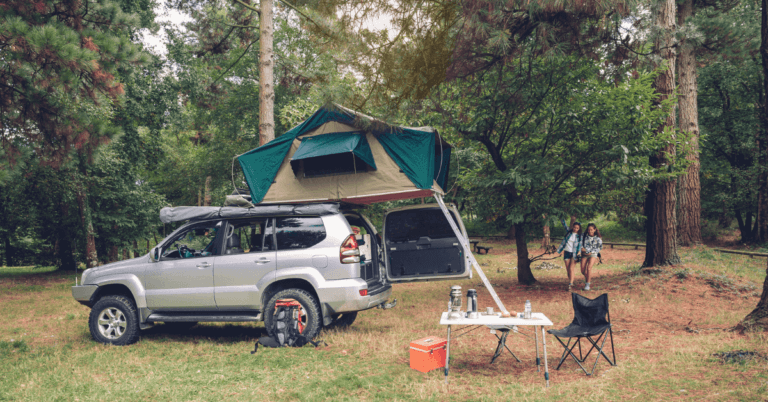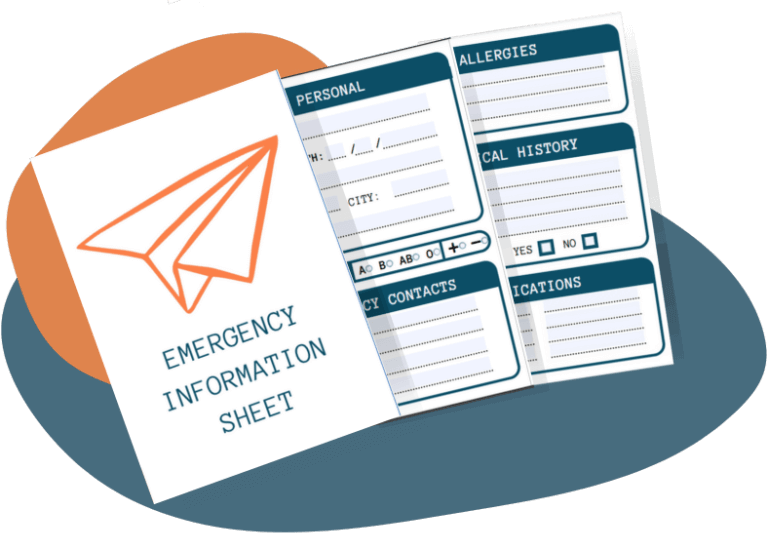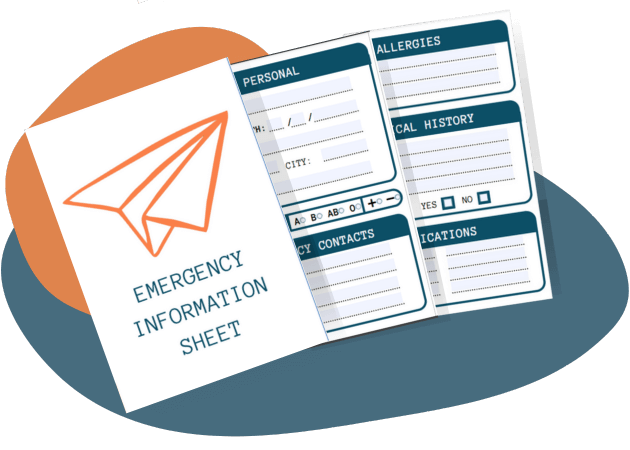Sprained your ankle on an adventurous hike or accidentally crushed your hand while working on your car?
Out and about or at home, knowing the first aid basics for relieving acute pain is a must. These principles of pain relief can be used anywhere and by anyone, regardless of their medical training level.
Ready to learn some first aid? let’s get startED!
Intro
Accidents happen, and while not all of them are avoidable, the pain they cause probably could be. There can be a stigma that you’re not ‘tough’ when you admit you’re hurt, but it’s important to treat pain immediately and efficiently.
Pain left untreated doesn’t only cause physical and psychological stress, it can make the pain receptors in your body more sensitive, resulting in you experiencing more pain.
Pain Management Pyramid
We now know the importance of managing pain. But what is an effective strategy for pain relief after an injury?
We’ll use the “Pain Management Pyramid” from the Wilderness Medical Society as a guide. (Russel, et al., 2014)
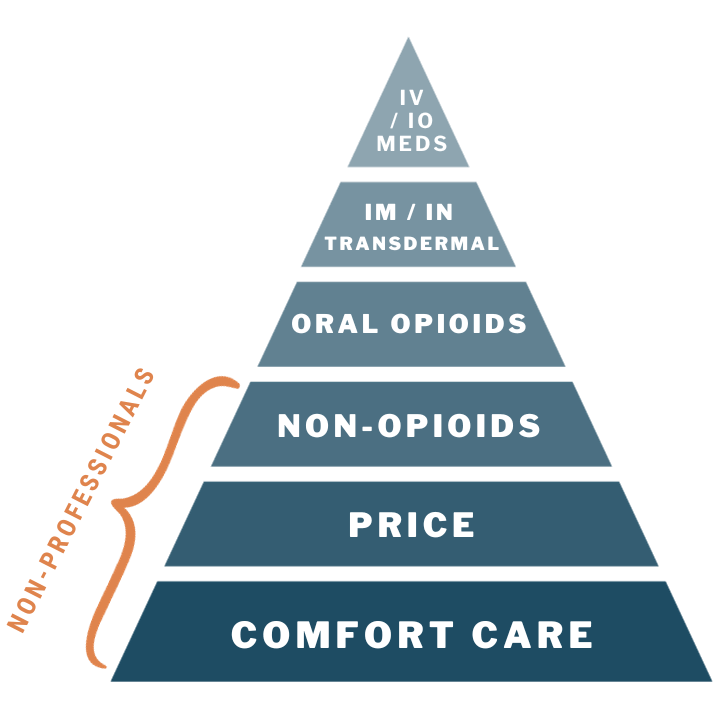
DISCLAIMER: Never administer any treatment you are not qualified for! An untrained individual will be limited to the three base layers of the pyramid: comfort care, PRICE, and non-opioid pain medication.
Comfort Care
Comfort care implies everything you can do to make a person experiencing pain feel more comfortable. Research shows that by showing empathy, comforting the person, and not leaving them alone, they will feel less anxious and experience less pain.
It’s a basic step, yet it’s one that’s easily overlooked. However, comfort care should always be the first thing you do when someone gets hurt, especially in a situation without access to pain meds.
PRICE Protocol
Russel, et al. (2014) recommend the PRICE treatment protocol for all acute soft tissue injuries. The goal is to minimize swelling since this puts pressure on the nerves, which will cause pain.
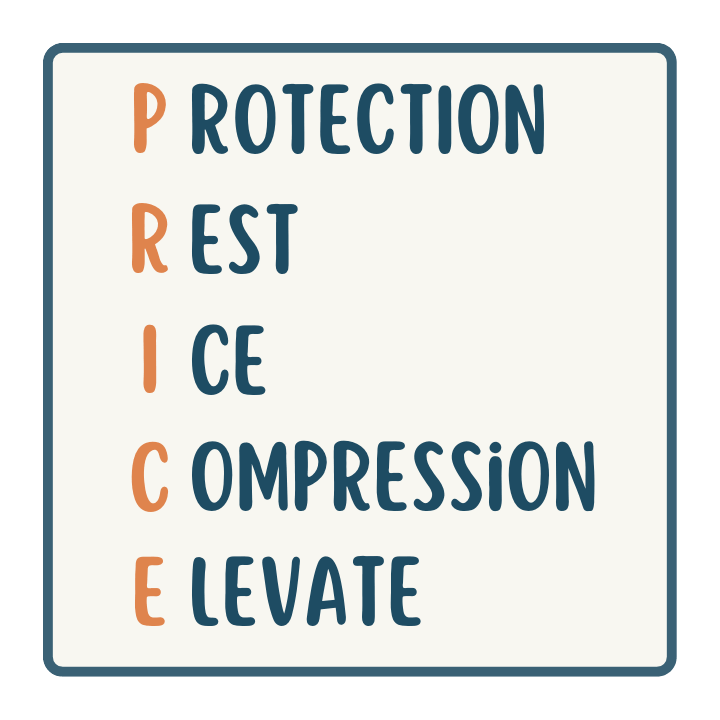
Protection
Use taping, bracing, or splinting to protect the affected area from further injury. In addition, this will add some extra stability to the injury.
Rest
If possible, let the injured area rest. Resting will reduce further inflammation, resulting in less pain as well.
Ice
By cooling down the affected area, the conduction of your nerves to your pain receptors will decrease. The ice will also lessen the amount of swelling.
- Always use a towel or another protective layer between the skin and the ice to avoid frostbite.
- Be cautious about hypothermia. Avoid cooling the body too much by pausing the icing after 10 minutes and allowing the injured area 10 minutes of rest without the ice on it.
- When traveling, you probably won’t have any ice on hand. As an alternative, you can use cool water or snow.

Add a single-use icepack to your first aid kit. No need for a freezer anymore!. Get one HERE!
Compression
Add compression to the injured area by applying an elastic bandage. It reduces swelling that might appear after the first inflammatory response of the body.
The goal is to compress and support, not to cut off the circulation. The bandage should be close-fitting but should allow muscle expansion and blood flow.
Compression should never cause any additional pain. Test if you can still fit a finger between the bandage and your skin. If you can’t, the bandage is too tight. Swelling can increase over time, so check the tightness regularly.
Elevation
Elevate the injured area above the level of the heart. This makes it easier for blood to flow back, which results in less swelling and a better disposal of waste products caused by the injury.
Medication
Sometimes pain medicine is necessary to alleviate the pain after an injury. The best practice is to combine NSAIDs* (Ibuprofen) and Acetaminophen (Paracetamol).
They reinforce each other, and when taken together, they offer better pain relief. Both meds can be taken orally, and both are available without a prescription.
*Non-Steroidal Anti-Inflammatory Drug
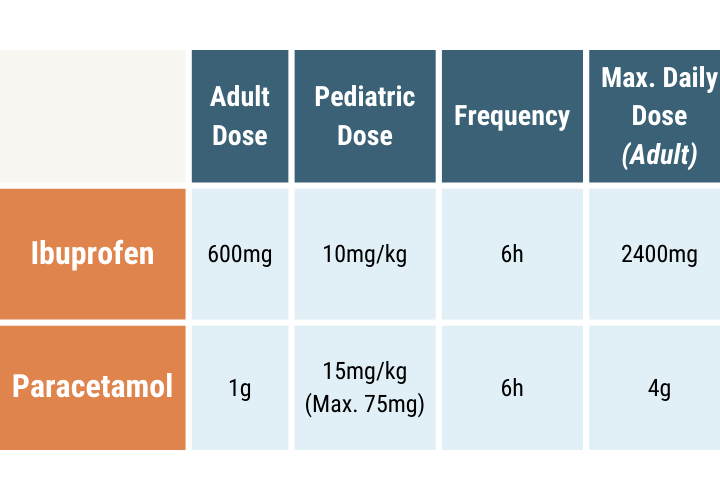
- Taking NSAIDs is NOT advised for people with renal problems and dehydrated people.
- NSAIDs thin blood. As a result, they could worsen the bleeding after an injury.
- Don’t use NSAIDs longer than ten days in a row without consulting a doctor. Long-term use could result in gastrointestinal problems. Try to eat something before taking the NSAID and stop using it immediately when you start having a stomach ache.
- Acetaminophen can be toxic to the liver when you take too much of it. Never exceed the maximum daily dose of 4g per 24 hours.
Summary
Unlike what most people might assume, the management of pain includes much more than pain medication.
When we adjust WMS‘ Pain Management Pyramid to be suited for non-professionals, it looks like this:
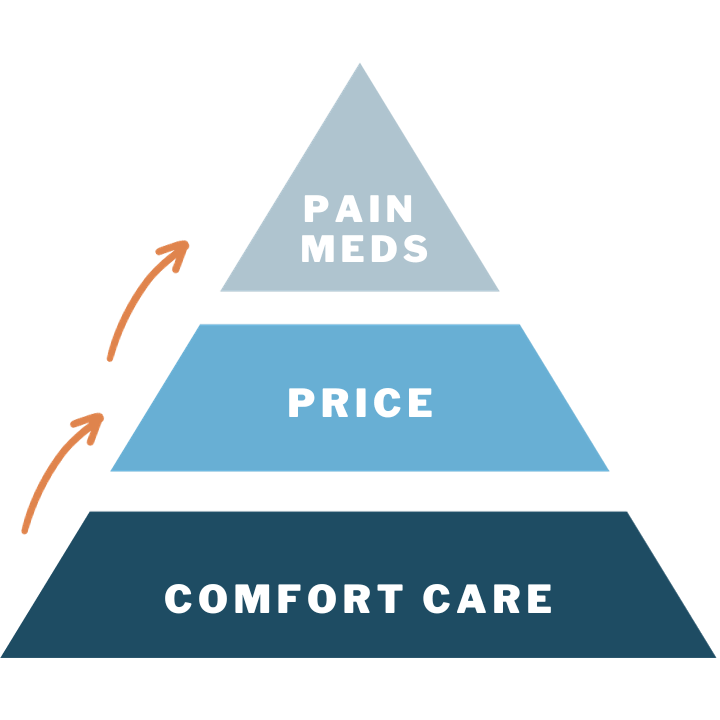
- The base of the pain treatment protocol is comfort care. This should always be the first step when approaching someone who got injured.
- After that, implement the PRICE protocol to reduce swelling and alleviate pain.
- If the first two steps prove to be insufficient in controlling the pain, medication can be considered. The best practice here is to combine NSAIDs with Acetaminophen.
DISCLAIMER: Be mindful of allergies and contra-indications before giving any medication to someone else.
DISCLAIMER: This article is purely informational and should not be used as a replacement for medical advice.
When you have gone through all the three steps of the pain management pyramid and the pain is still not under control, you should contact a doctor.
Want to learn more about first aid? NExt discover 5 mistakes you shouldn’t make in your overlanding First Aid Kit!
Sources
Russel, K. W., Scaife, C. L., Weber, D. C., Windsor, J. S., Wheeler, A. R., Smith, W. R., . . . Lieberman, J. R. (2014). WMS Practice Guidelines for the Treatment of Acute Pain in Remote Environments: 2014 Update. Wilderness & Environmental Medicine(25), 96-104. Available at https://www.wemjournal.org





